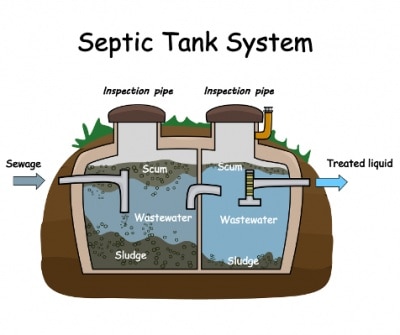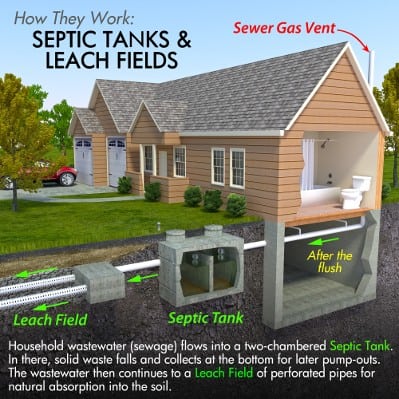Residential Septic Services

Septic Tank Pumping
Septic Tank pumping is the best preventative maintenance a homeowner can perform. We recommend doing it every 3 years. Schedule today by calling (616) 396-5512.

Septic Inspections
Septic system inspections are performed before buying or selling a property. In general, they give you an overall assessment of how well your septic system is performing.

Septic Systems 101
Michigan septic systems are generally comprised of a Main Wastewater pipe, Septic Tank, and a Drain field. More advanced systems introduce oxygen into the solution for cleaner discharge.
Septic Tank Pumping
Septic Tank Pumping is a routine maintenance task that every homeowner should schedule every 2-3 years. Sludge build up in the bottom of your septic tank is natural and occurs over many months. The key to keeping your septic system operating efficiently is to pump out this sludge on a regular basis. If the sludge fills your entire tank, it will also flow into your drain field which can be an expensive replacement.
Septic Tank FAQs
Common residential septic tanks generally range in size from 750 to 1,250 gallons.
For residential construction, the 3 most common types are concrete, polyethylene/plastic, or fiberglass. Most homeowners in Michigan likely have a concrete septic tank.
Local building codes will dictate for new construction but here are some general guidelines:
– 750 Gallons (1,500 square feet)
– 1,000 Gallons (up to 2,500 square feet)
– 1,250 Gallons (up to 3,500 square feet)
Schedule Your Septic Tank Pumping Today!
Septic Inspection Service
- Wastewater Drain from your house
- Septic Tank
- Septic Drain field
- Soil
During an inspection, we are looking to see three distinct layers in your septic tank: a floating scum layer at the top, semi-clear water in the middle and then a layer of sludge at the bottom. If these layers are not present, we begin to troubleshoot the issue. Missing baffles or damaged baffles / screen are one of the most likely causes.your baffle(s) are missing or damaged
Inspection Items
You may need your original house plans to determine the exact location & type of system installed. In addition, homes usually only have one main sewer line going out into your septic system.
Do we see green patches of grass directly surrounding the tank area? This would indicate the tank is leaking or not operating at 100% efficiency.
We’ll look for cracks in the tank caused by ground movement, trees roots, or potentially heavy equipment being used in the past. Tank areas should be protected from potential vehicle traffic.
Tanks have baffles or screens for both the inlet and outlet. These baffles are designed to prevent solids (scum or other debris) from flowing directly into your septic drainfield. If these are missing or damaged, your drainfield will eventually fail.
Septic systems use drain fields & soil to naturally remove contaminants and impurities from your home’s wastewater. It’s normally a series of drain tiles (perforated pipe) buried underneath your yard. Signs of failure include: wet soggy areas in your yard, odors outside near the tank, or all of your plumbing fixtures are draining slow or not at all.

Fully Functioning Septic Systems
(Two Chamber System)
- Scum Layer at the top
- Semi-clear Wastewater in middle
- Sludge Layer at the bottom
Having Septic Tank Issues?
Septic Systems 101
Michigan homeowners are most likely going to have a conventional septic system with a concrete tank and gravel based drain fields.
Common Questions
In short, it’s naturally occurring bacteria that make these systems work. Wastewater flows from your household appliances into your septic tank. Bacteria in the tank begins to break down the organic material into a watery waste known as “effluent”. This bacterial digestion process naturally separates solids, wastewater, and fats into 3 layers. Solids fall to the bottom of the tank (sludge layer), fat & oils float to the top (scum layer), and the treated wastewater eventually travels into your drain field / leach field.
Bacteria in the drain field continues the natural decomposition process.
Aerobic Treatment Units (ATUs) use Oxygen infusion to assist in the digestion process. ATUs do produce a higher level of effluent treatment and can be a good alternative in locations with poor soil types, or townships requiring a Type 2 system.
As we’ve mentioned previously, the most important maintenance item is “pumping” on a regular basis. We recommend every 3 years at a minimum as this allows us to do a visual inspection of the layers & baffles / screens used in your system.
***Pumping your tank every 3 years is much less expensive than having to replace your entire septic system.

